

When you're working on a long document, a table of contents makes it easier to navigate from section to section. By default, Google Docs automatically generates one for you in the side panel based on your document headings. But if you plan to print your document or convert it to a PDF, you may want to generate a table of contents within your document.
Here's a quick refresher on how to create a table of contents in Google Docs (keep scrolling for detailed steps):
Table of contents:
It's easy to create a table of contents in Google Docs, but first, you need to make sure you've applied heading styles throughout.
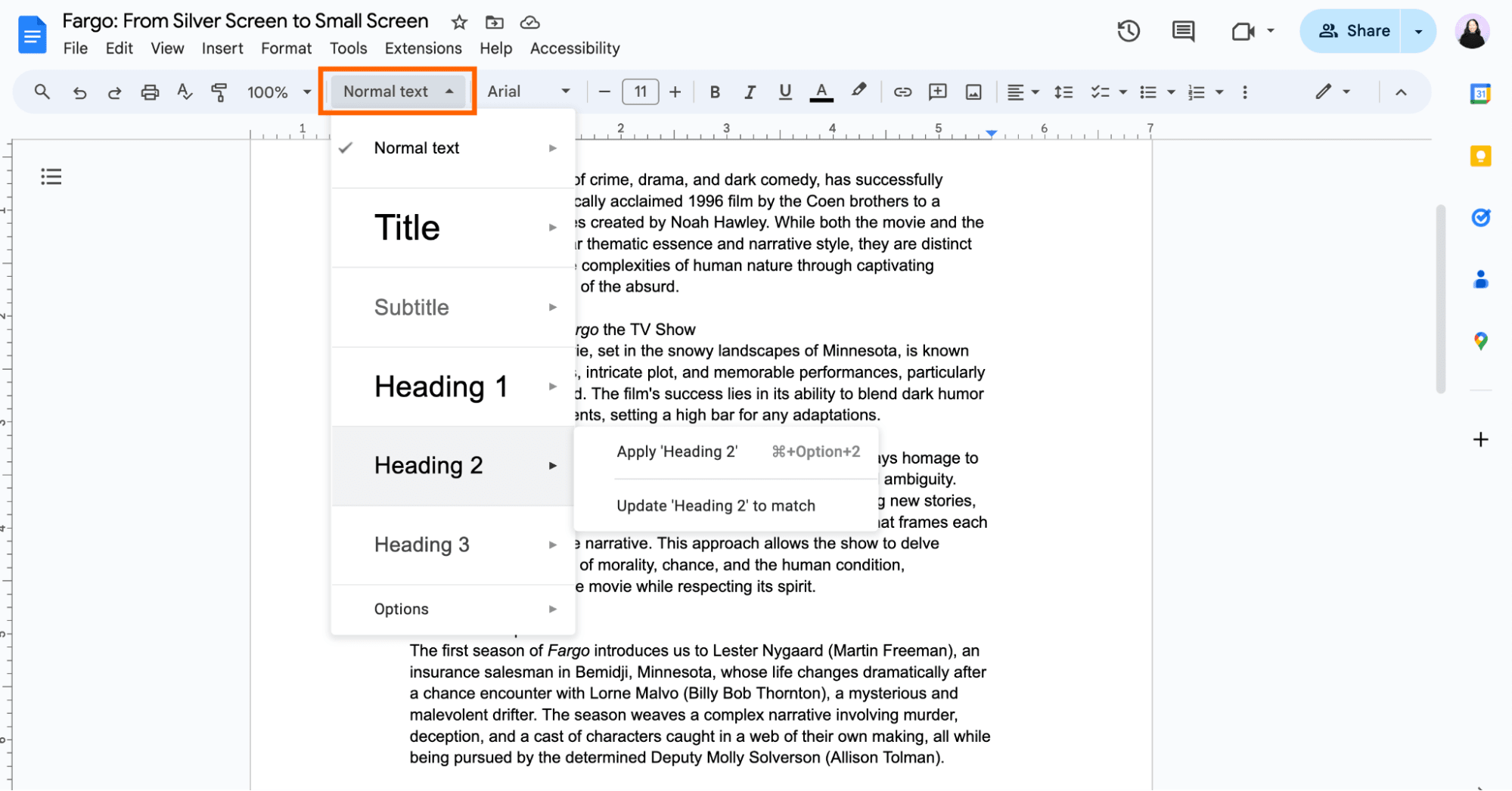

Once you've updated your document with heading styles, you're ready to make a table of contents.
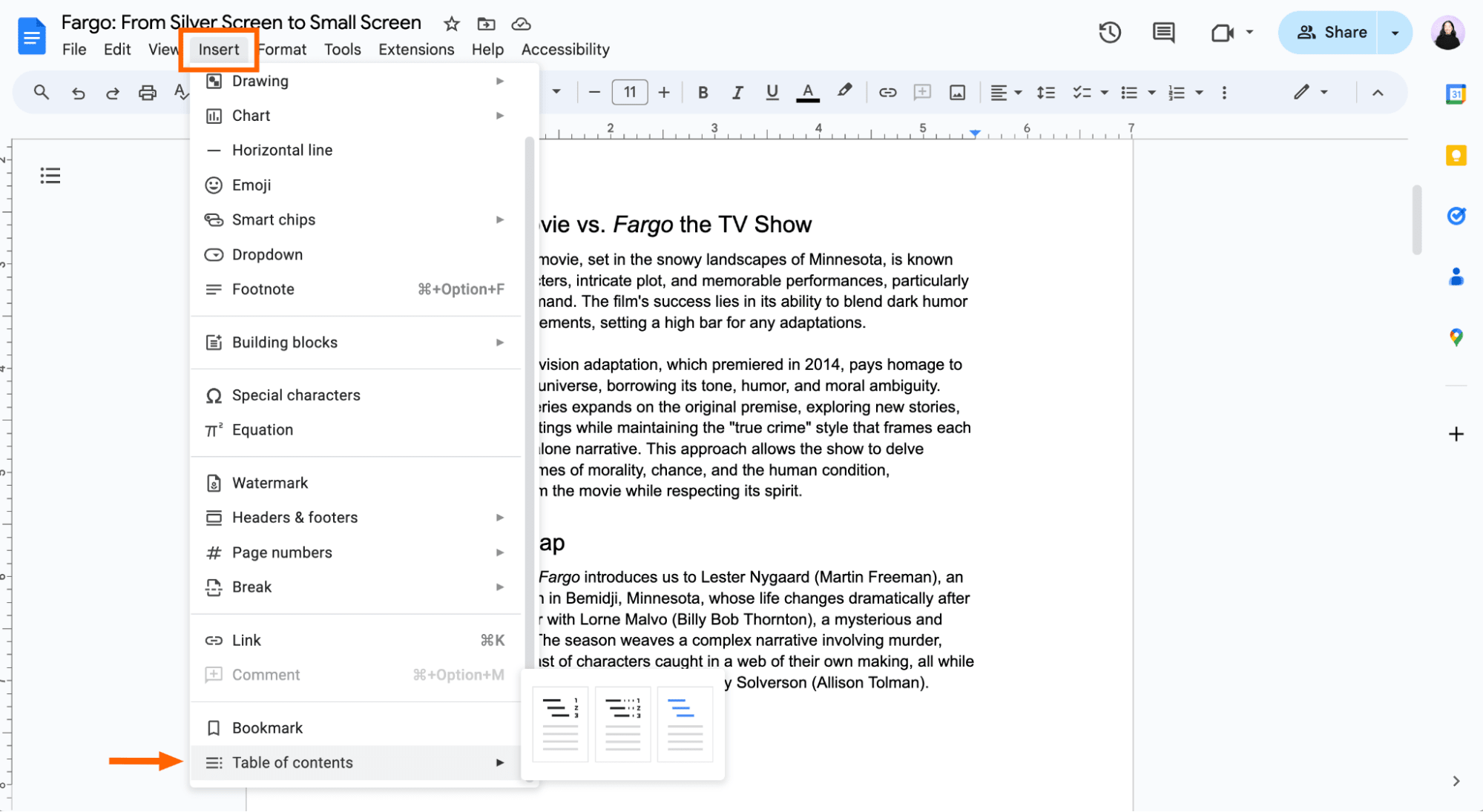
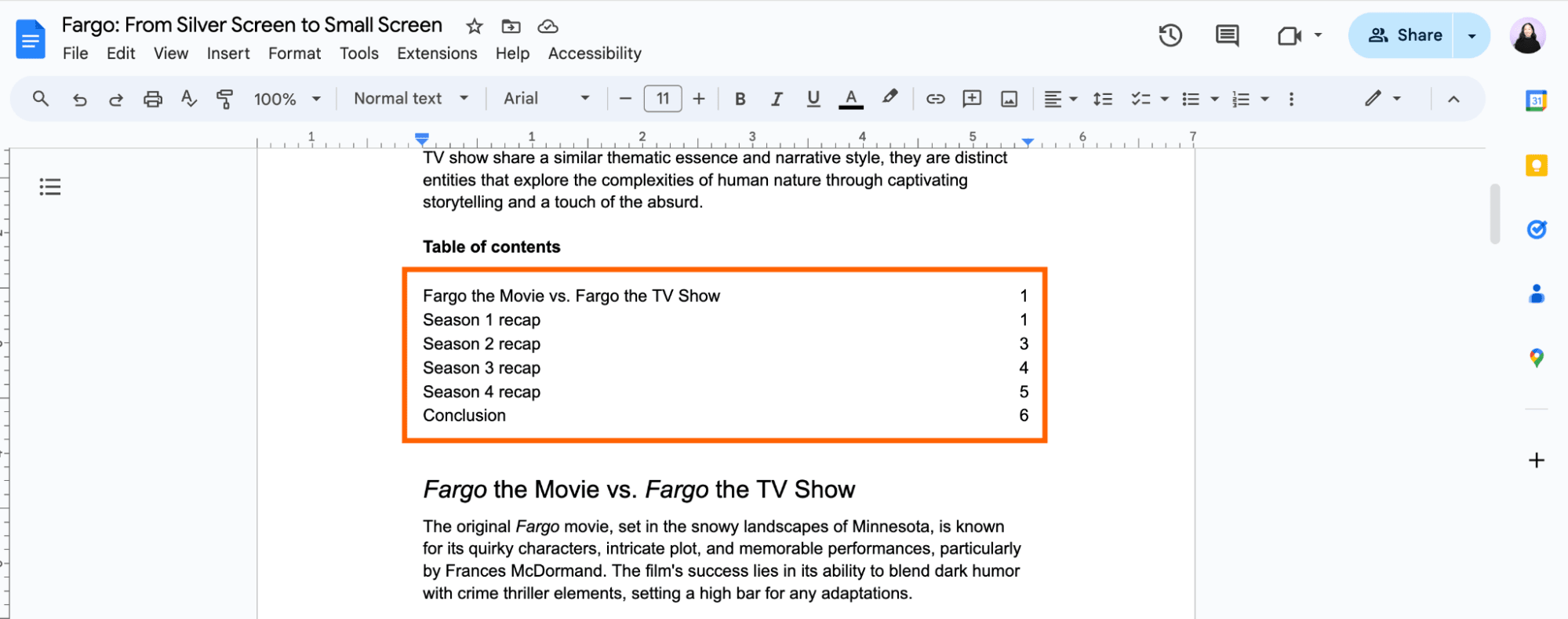
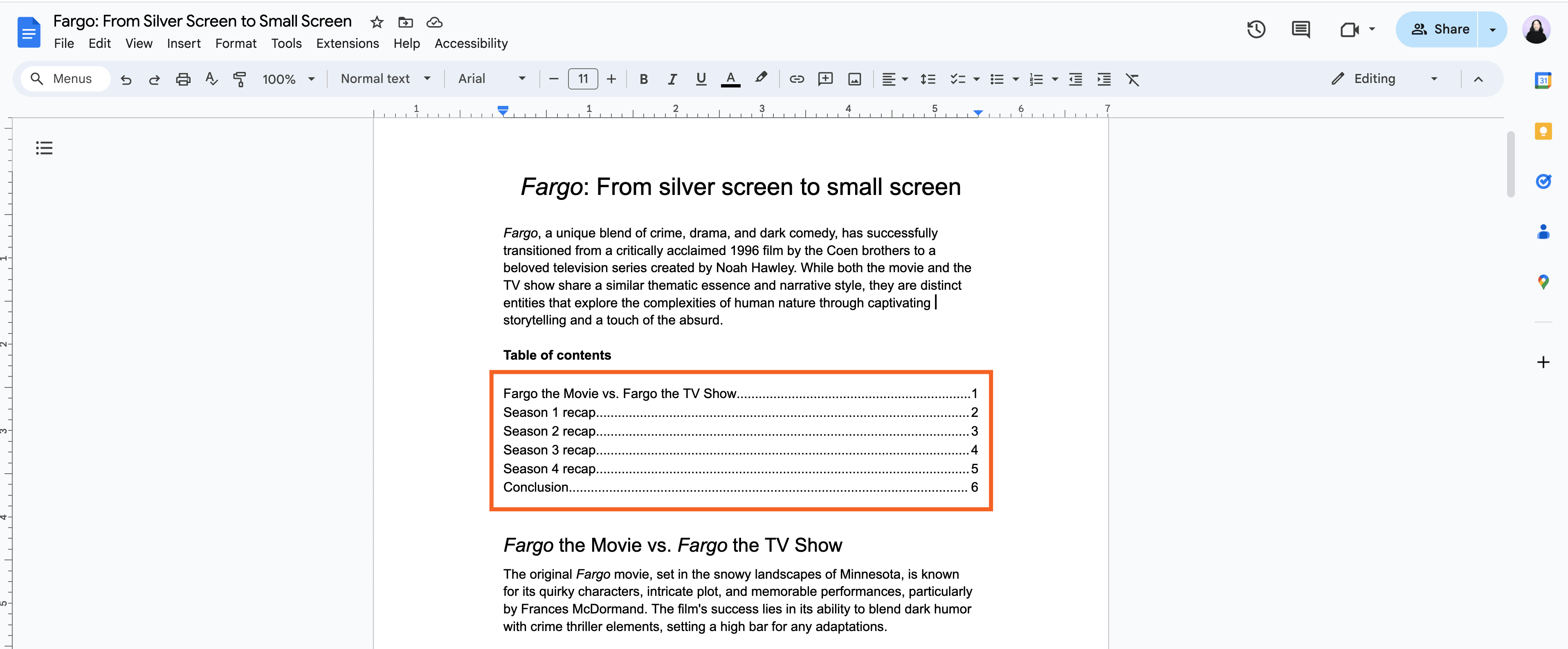
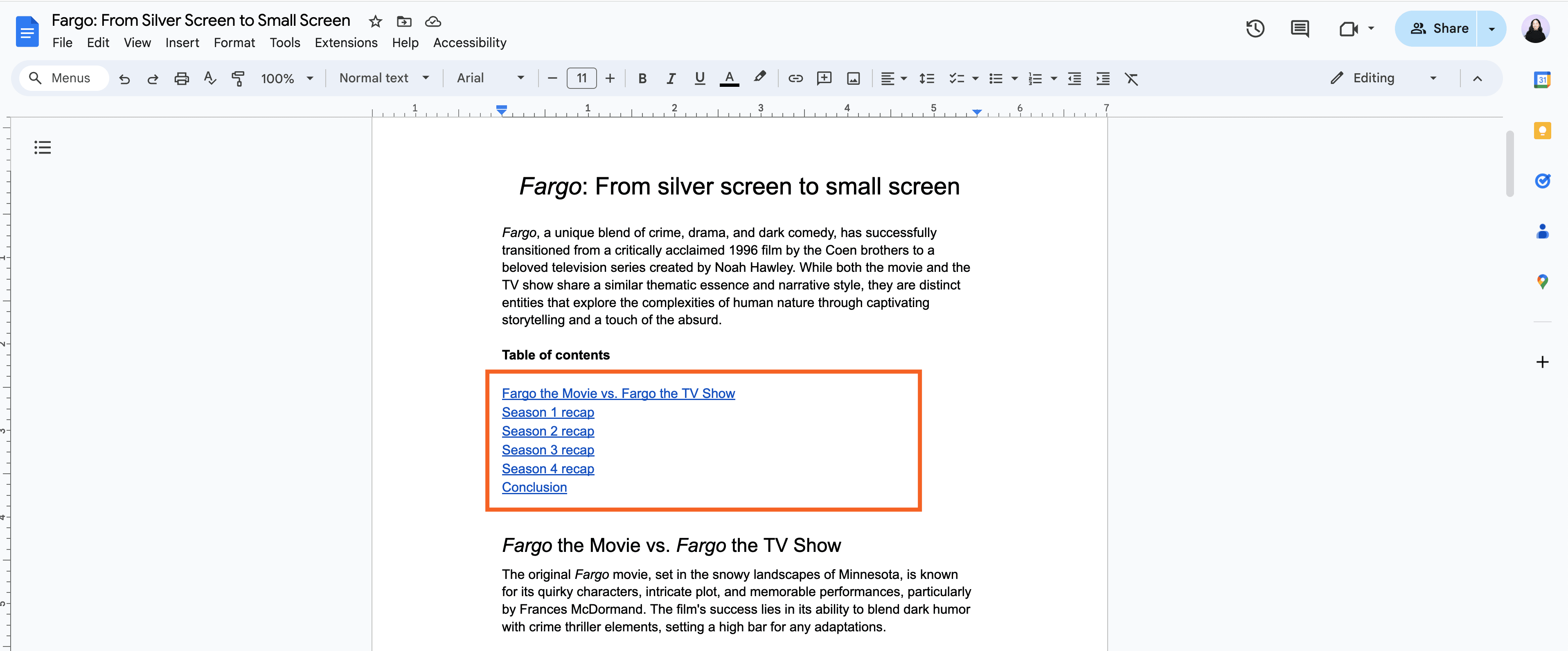
Note: If you're using a pageless view, Google Docs will automatically set your table of contents style to Links—there are no page numbers, after all.
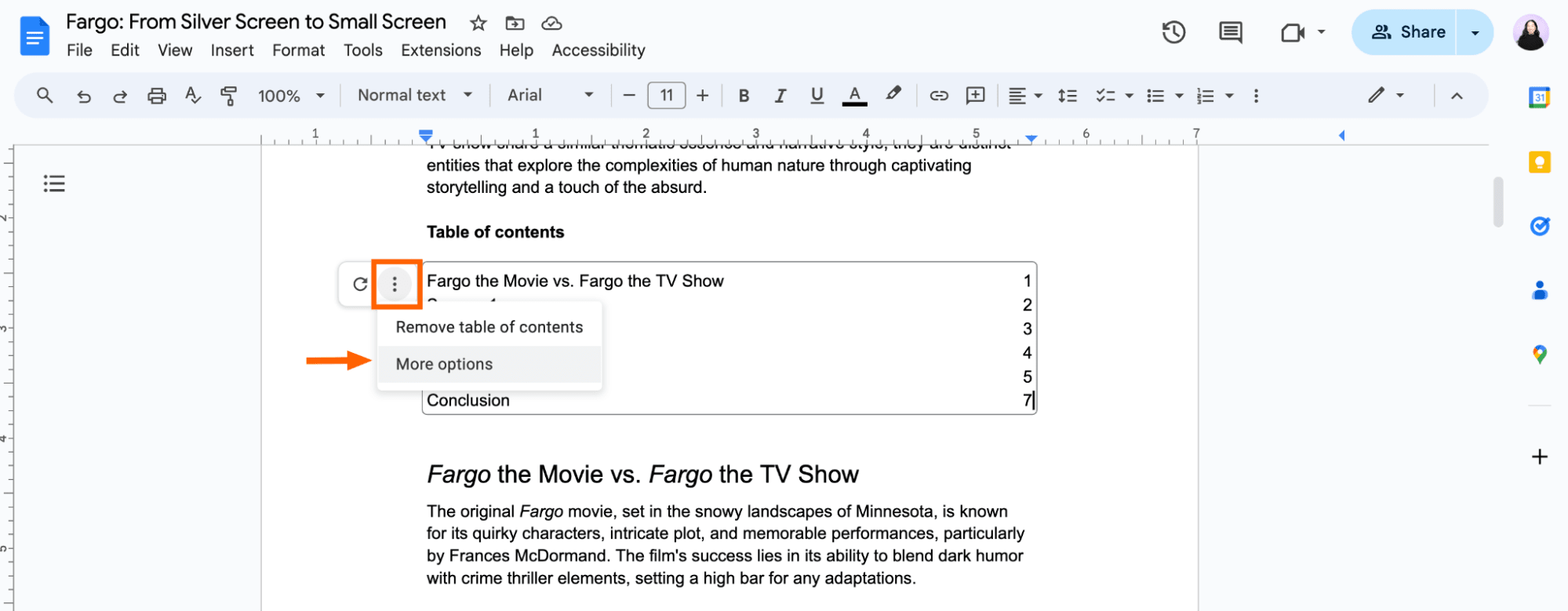
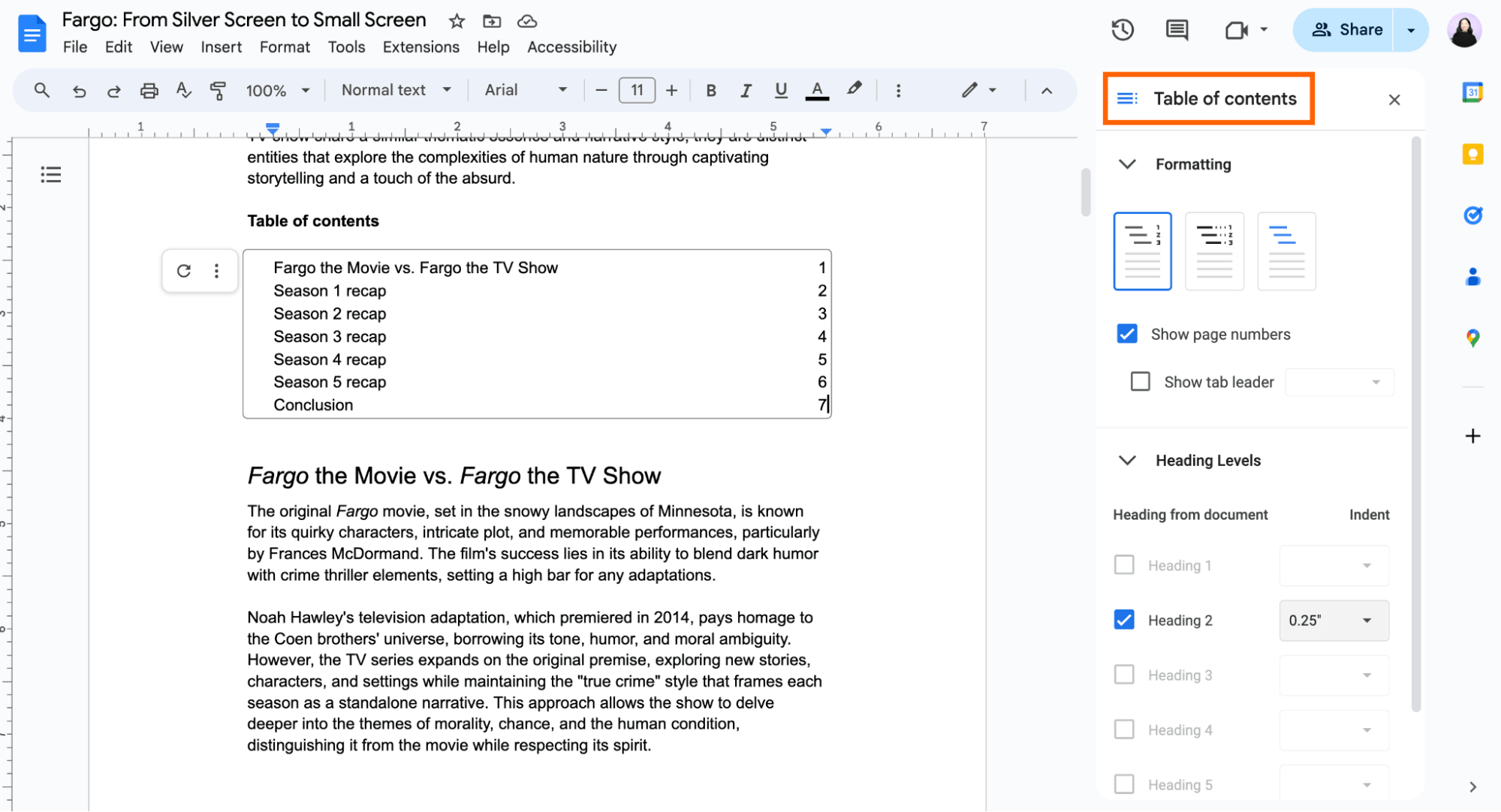
If you've applied changes to your heading styles or added new sections after you first created your table of contents, Google Docs makes it easy to automatically update your table of contents to match.
Click anywhere in your table of contents, and then click the Update table of contents icon (which looks like a circular arrow) in the floating toolbar.
Click anywhere in your table of contents, and then select the More options icon ( ⋮ ). Select Remove table of contents.
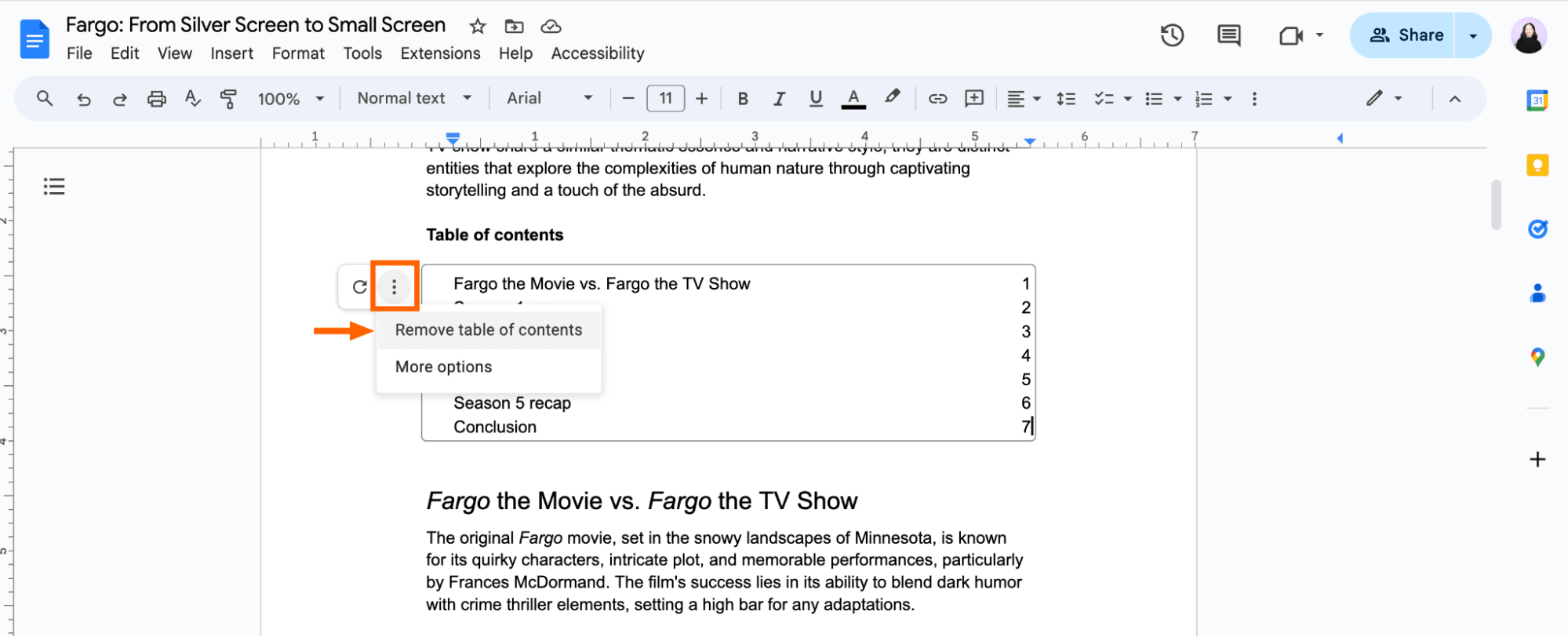
If you find yourself creating documents with similar outlines and section headings over and over, save yourself some time by turning your document into a Google Docs template. Once you have your template, connect Google Docs with Zapier. This way, you can automatically populate it with data from other apps, like a spreadsheet. Here's an automated workflow to get you started.
To get started with a Zap template—what we call our pre-made workflows—just click on the button. It only takes a few minutes to set up. You can read more about setting up Zaps here.
Related reading:
Get productivity tips delivered straight to your inbox
We’ll email you 1-3 times per week—and never share your information.

Jessica Lau is a senior content specialist at Zapier. Outside of writing, she likes to snuggle her dogs, and provide unsolicited podcast and book recommendations.